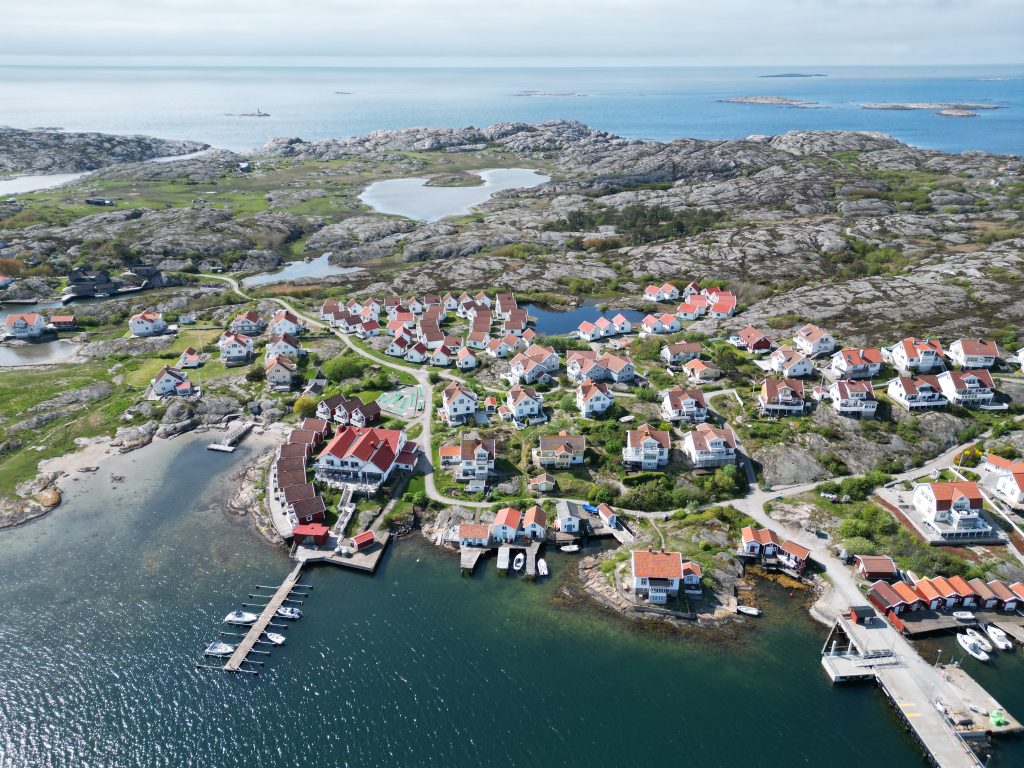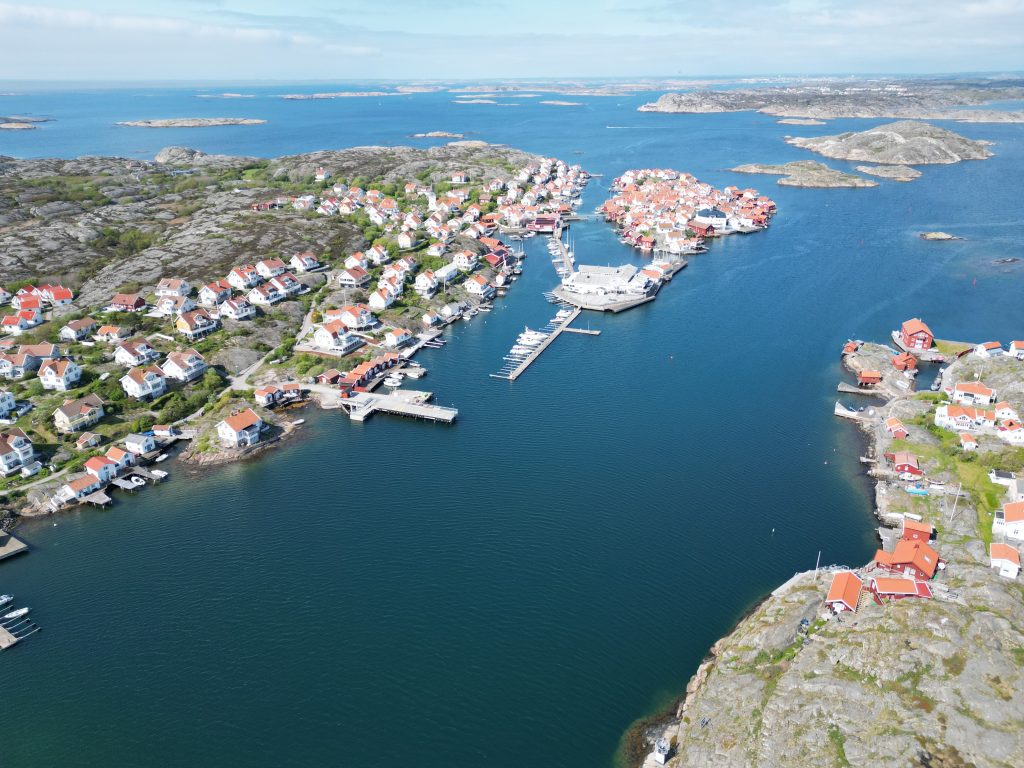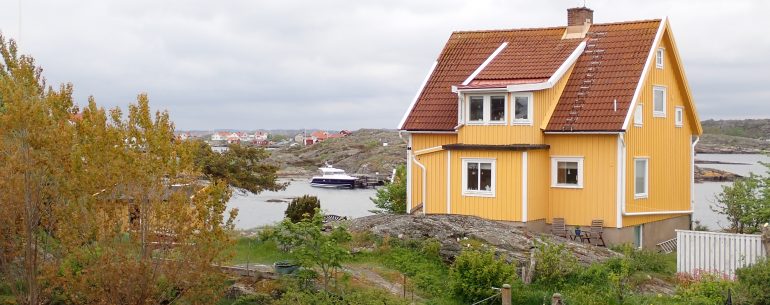We decided to stay for the day at Gullholmen. A grey start to the day made it more suitable for walking than sailing, so we decided to walk around the island. Gullholmen is at the northern end of Härmanö and the island is now all a nature reserve apart from Gullholment itself. However, this wasn’t the case until 1967 when the nature reserve was established. Before that feldspar was mined on the island. Feldspar is a mineral group of aluminum silicates with sodium, potassium, or calcium. It is particularly found in granite and gneiss. Given that most of the bedrock of the island is gneiss, this is perhaps hardly surprising. Black ribbons of diabase also run in a north-southerly direction across the whole island and the ice sheet that covered the island has left its mark as well in the form of rock sculptures like giant’s kettles, depressions and rock pools.

The island now is a haven for wildlife. On the southern part of the island are white-tailed eagles, auks, scoters and various species of geese. Osprey have apparently been seen hunting here as well. On much of the island there are small wetlands and pools. Some of these result from historic peat extraction but more recently changes have had nothing to do with man. Beavers have started building dams in the last decade or so, creating areas of open water.
Gullholmen itself was originally a fishing village and is mentioned in documents from as early as the late 1500s, but it is possibly even older. On the southern end of the island houses have been excavated that date from this period and it is thought that people were resident all year-round.
As with so much of this area fishing for herring was periodically important for the islands’ economy. One of the peak periods for the herring fishery was 1747 to 1809, but the supply of this “silver of the sea” over the centuries has been extremely variable. In the main 18th/19th herring period, the Swedish government sought to extend it by banning the dumping of herring carcases in the sea. They dug great pits to house the waste, but when the fish left anyway, the Swedes blamed British men-of-war for upsetting them with cannon fire. Another good period was between 1877 and 1906 and this led to the suggestion by the Swedish herring scientist Ljungman, that visits of the herring were related to the 111 year sunspot cycle. More recently academics have tried to establish more scientific reasons for these fluctuations, but with limited success. The Dutch herring academic Ad Corten (who knew there were so many herring academics!) argued that the cause of the fluctuations was the ‘negative phases’ of the North Atlantic Oscillation. In case you were wondering, this is a ‘multi-annual variation in the mean atmospheric pressure distribution’. It is possible that the strong easterly winds caused by this during the autumn, drive surface water out from the Skagerrak and allow the sub-surface counter current to drive in the juvenile herring as they feed on zooplankton. Or …. the herring may just like a change of scenery! In the early 1900s up until the First World War, this fluctuation meant that fishing for ling and mackerel in the North Sea rather than herring was the most important source of income for the Bohuslän fishermen of Gullholmen.

